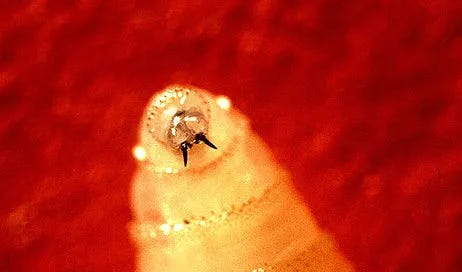The Honduran Ministry of Health reported on April 28 that, so far in 2025, the country has reported 27 confirmed cases of screwworm myiasis in humans and three deaths from the disease.
The head of the Ministry of Health's Zoonosis Program, Reina Teresa Velásquez, stated that all 27 cases have been confirmed through laboratory testing and that the majority of those affected are men.
Velásquez also indicated that three deaths related to screwworm myiasis have been recorded; two of the deceased had preexisting conditions.
Screwworm myiasis is a parasitic disease caused by the larval or maggot stage of the fly Cochliomyia hominivorax, which lays its eggs in open wounds of warm-blooded animals, including humans.
Hours after laying, the larvae hatch and feed on living tissue, causing severe injuries, loss of organ function, and even death in severe cases.
The presence of the screwworm in animals was detected in Honduras in September 2024, leading authorities to declare a health emergency. However, the first human case was reported on February 6, 2025, in a man living in Catacamas, Olancho department, in the east of the country.
Velásquez noted that the most affected departments are Francisco Morazán—where Tegucigalpa, the capital, is located—and Olancho and Yoro, in the east and north of the country.
He also called on the population, especially those with wounds or ulcers, to maintain proper hygiene and receive medical care to prevent the flies from laying their larvae and causing myiasis.
To date, the Central American country has confirmed more than 1,200 cases of screwworm myiasis in animals since the health alert was declared.
The Ministry of Agriculture and Livestock implemented a prevention plan that includes the establishment of quarantines at entry points, epidemiological surveillance in risk areas, mass health education campaigns, and increased animal inspection and movement controls.





